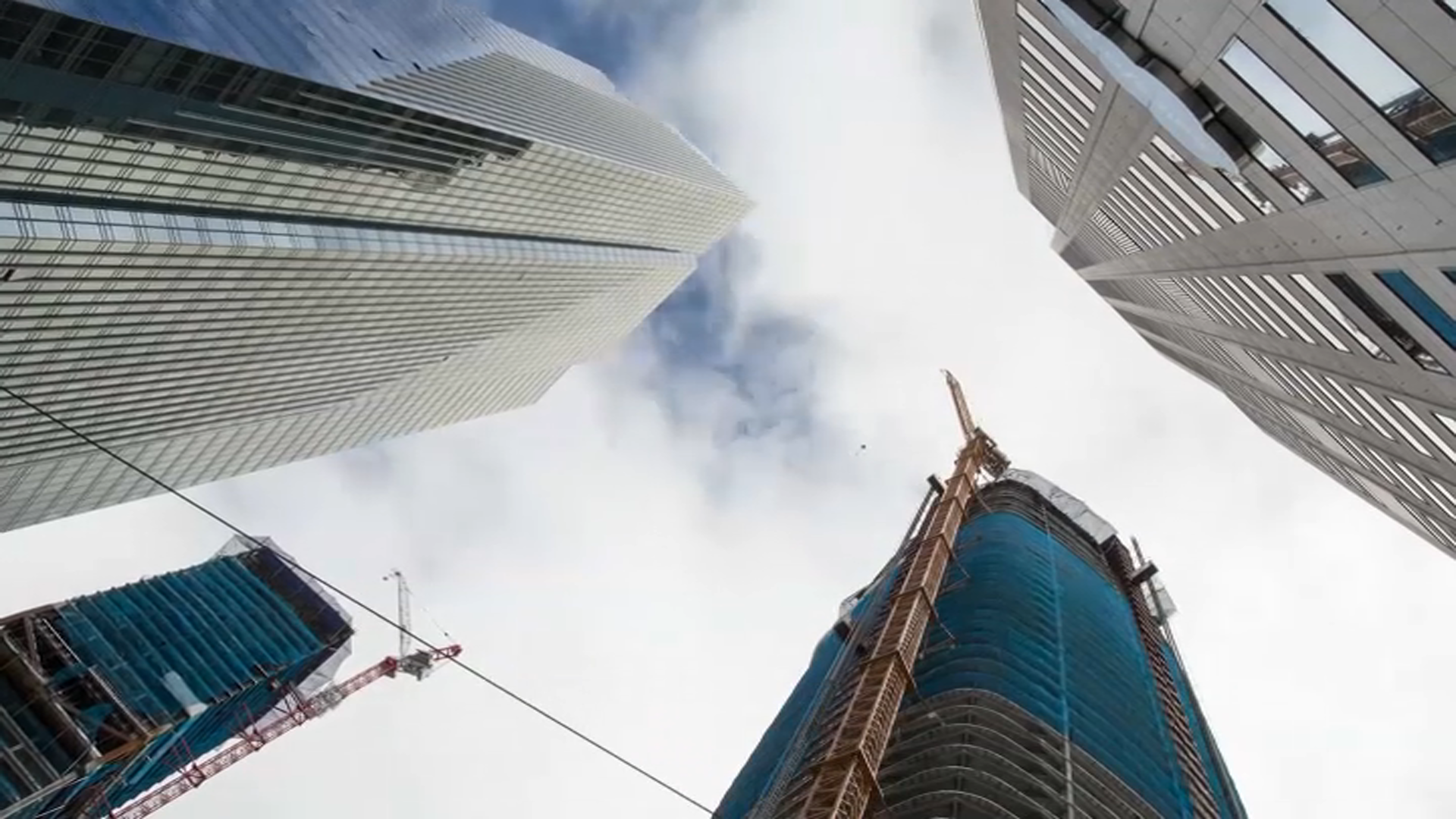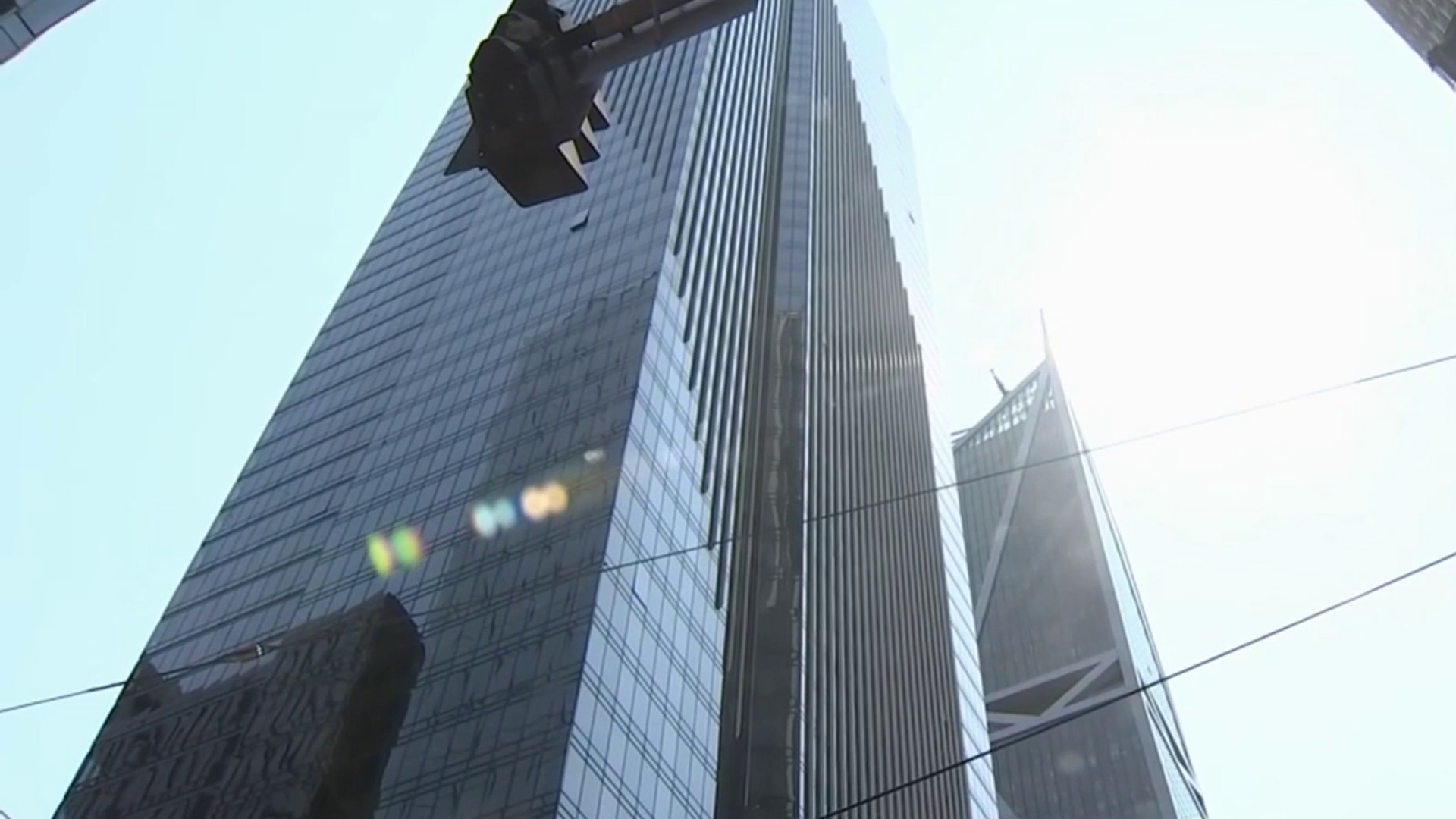Newly released monitoring data shows that San Francisco’s Millennium Tower tilted a quarter inch during the four days it took to install the first test pile to bedrock last month.
The monitoring data tracks settlement, tilting and water pressure levels underneath the sinking and leaning structure since work began on a fix for the troubled tower in May. Since work began to shore the sinking structure up on the north and west sides, the building has settled nearly 2 inches at the northwest corner and is now tilting more than two feet at that edge.
The latest data – including the four days that the test pile was installed from Nov. 15 to Nov. 19 – shows a quarter inch of new tilt, as well as a tenth of an inch of settlement at the time the test installation occurred. At the same time, there was marked fluctuation of water pressure below the foundation on the Mission Street side of the structure.
The water pressure level was recorded at various depths more than 100 feet below the structure, where a layer of clay resides.
Veteran geotechnical engineer Bob Pyke said the sudden fluctuation is a telltale sign.
“This is a large drop -- you can't see the scale on this plot -- but this is a pretty dramatic effect” he said, pointing to the monitoring data chart that tracks the water pressure levels more than 100 feet below the building. While the data shows plunging pressure level quickly came back up, Pyke said the brief loss would likely generate settlement.
Pyke suspects that the drilling method used to remove soil and water from the bottom of the hole is to blame.
“It's no different from sucking a straw into a milkshake,” Pyke said, noting that removal method involves using suction, essentially vacuuming up water and debris from the bottom of the shaft being drilled. He says the sucking process is likely stressing larger areas of the Old Bay Clay layer under the building’s existing foundation.
He noted that while the pressure recovered on the Mission Street side, it did not return to previous levels under other parts of the foundation. Triggering accelerated settlement across other parts of the foundation of the building.
Get a weekly recap of the latest San Francisco Bay Area housing news. Sign up for NBC Bay Area’s Housing Deconstructed newsletter.
Other experts say the water pressure drop is evidence that the method designed to limit settlement may not be working as well as hoped.
“You can accidentally remove soil that you want to stay in place,” said Rune Storesund, a geotechnical engineer who runs UC Berkeley’s Center for Catastrophic Risk Management. He says the water pressure data suggests engineers could clearly do more to refine their methods. “You’re always going to get settlement, obviously you want that to be as low as possible.”
Still, Ron Hamburger, the fix designer, recently assured city officials that the settlement that has occurred during testing of new methods designed to limit sinking is within expected levels. Hamburger now has city permission to install two more test piles. Hamburger told city officials the additional testing is needed to help determine just how many piles will ultimately be used to shore up the structure.



